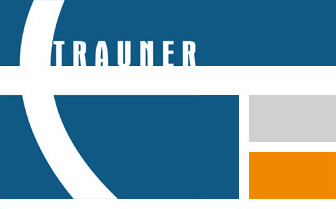Construction Project Scheduling: A Basic Guide
In this basic guide to construction project scheduling, we’re going to discuss why we have schedules, why they’re important on projects, and how they should be used. In addition, I’m going to jump into and discuss essential Critical Path Method (CPM) concepts.
What Is Construction Scheduling?
A construction project schedule is either a written or graphical representation on how the project is to be completed or constructed. When I say written, it could be a written narrative. It could be a description. It could be depicted as a bar chart schedule or a CPM schedule.
A construction schedule is analogous to a contractor’s bid. Just as a contractor’s bid is an estimate of its cost that it expects to spend to build the project, the schedule represents an estimate of the time required to construct the project.
What Is A Construction Scheduler?
The construction scheduler is the person on the project who is responsible for developing and updating the project schedule.
There are really two types of schedulers. One is a button pusher, someone who takes the information from one party and inserts it in scheduling software like Primavera, Microsoft Project, or Asta Powerproject.
The second type is what I would call a professional scheduler. That’s someone who knows and understands construction means and methods, as well as the capabilities of the software. Most importantly, they also understand what construction scheduling best practices are and how to incorporate them into the project schedule.
Too often projects don’t have a professional scheduler who can pull all those elements together. Bringing on such a person does not guarantee project success. But the right professional scheduler can work with the project manager and the project superintendent to ensure that the plan residing in their heads is accurately depicted in the project schedule and will protect the contractor’s risk.
Construction Scheduling Basics
In nearly every case, a construction contract will require the contractor to complete the project within a specific duration or by a specified completion date.
For every construction project, there is a lot of work that must be done before contract completion.
The construction project schedule provides a detailed description and representation of how the contractor plans to construct the project’s work scope. That work scope is represented by the schedule’s work activities, how long they’re going to take, and their sequence. One thing to remember is that a construction project schedule is the only project management tool that can forecast when the project will finish.
The construction schedule should predict, based on the contract, the plan, and how the work should progress to forecast, when the project is expected to finish.
Why Do We Need Project Schedules?
Increasingly, over the last 15 or 20 years, construction owners have required that contractors prepare schedules during the construction project. There are two primary reasons for this trend.
First, as projects become more complex and have tighter budgets, we need schedules to help us manage our construction projects. As a construction project management tool, a schedule enables the project participants (not just the owner, the contractor, the engineer, or the architect) to understand the plan for completion. It allows the parties to coordinate all the elements of the work.
To some degree, this trend has also been driven by litigation. Time is money. Every day a construction project is delayed, either the owner, and/or both the owner and contractor, will incur additional costs to support that project. Therefore, we need a way to measure to what extent the project is delayed.
The schedule allows us to identify not just what the work is, but the responsibilities of each party, and the party responsible for each of the activities.
It allows us to track performance. Ultimately, having a reasonably accurate schedule, be that a bar chart or a CPM schedule, will also enable the project participants to identify and resolve project delay as it occurs.
The last thing you want to do is ignore time-related issues during the project and have the parties kick the can down the road. This will often result in a claim being submitted because time wasn’t resolved, the project finished late, and the parties can’t agree as to the cause of the delay. This can and often does result in unnecessary money spent in litigation.
That is not a recipe for success on construction projects. We want to finish projects on time and on budget. A way to do that is to address delay as it occurs during the project.
What Is Critical Path Method Scheduling?
The most commonly used construction scheduling technique is the CPM approach. This approach models or depicts the construction plan in what is called a network. This network consists of activities and logic relationships that determine the overall sequence of construction.
In a CPM schedule, “activities” depict every element of work in the project, be it preparation, submission and review of submittals, procurement, or construction. We connect those activities with “logic relationships.” For example, the schedule may depict that one activity can start only after another is finished. The combination of the work activities, their duration, the logic in the schedule, and a mathematical formula allow us to predict when the project will finish.
A nice thing about the CPM schedule is it allows us to model both the physical and the contractual limitations or constraints on a project. As an example, especially on larger and more complex construction projects, we can develop a CPM schedule that integrates contractual limitations on work during certain time periods, like environmental restrictions or winter weather.
A CPM schedule also enables the project team to prioritize the uncompleted work, based on the activities’ total values, and to assign the available resources to complete the work in the most efficient manner. It also allows us to:
- Assign responsibility, costs, and resources to each of the project activities.
- Forecast the expenditure of costs on an earned value basis.
- Forecast the expenditure of hours, direct labor hours, over the course of the project.
- Track whether we’re achieving those expected rates of production or earning of the contract amount.
Compared to a bar chart, a CPM schedule is a much more comprehensive tool that project teams can use to plan and manage projects. I’ve worked on projects where I developed CPM schedules ranging from 300 activities to 30,000 activities. The number of activities in your CPM schedule often comes down to the level of detail you choose to represent, the project’s size, or its complexity.
Mark Nagata is a Director/Shareholder of TRAUNER and is an expert in the areas of critical path method scheduling, delay and inefficiency analysis, and construction claim preparation and evaluation.
He loves to get questions at mark.nagata@traunerconsulting.com.
If you liked this article, be sure to sign up on the left side of our website to receive our Ideas & Insights in your email. Be sure to check your email after signing up.

